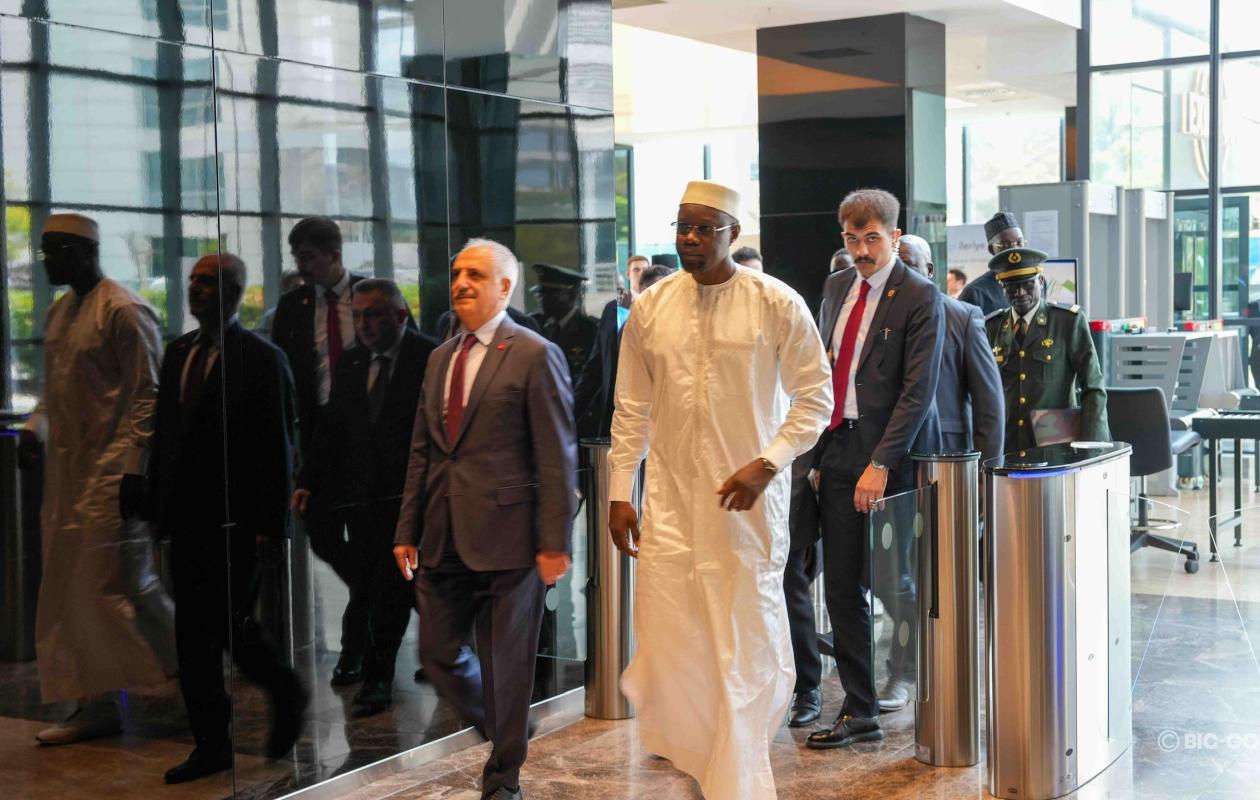
Abolition du califat, alphabet latin, laïcité : Mustafa Atatürk, le père de la Turquie moderne honoré par Ousmane Sonko
This Thursday, August 7, in Ankara, Ousmane Sonko paid his respects in the morning before the mausoleum of Mustafa Kemal Atatürk, founder of the Turkish Republic. Arriving there on August 6 for a five-day official visit at the invitation of President Recep Tayyip Erdoğan, the Senegalese head of government thus honored the memory of a statesman whose legacy extends far beyond Turkish borders. It is in this context that the career of Mustafa Kemal Atatürk, often called "the father of the Turks," deserves to be revisited.
Born in May 1881 in Thessaloniki, Greece, Mustafa Kemal grew up in a declining Ottoman Empire. Trained in military schools, he rose through the ranks thanks to his strategic skills. The Dardanelles Campaign of 1915 distinguished him as one of the Empire's most skilled defenders.
In the aftermath of the First World War, the Allied forces imposed their presence on Ottoman territories. From Samsun to Ankara, Mustafa Kemal organized the resistance. The Turkish War of Independence culminated in the proclamation of the Republic on October 29, 1923. Ankara became the capital. The victorious general assumed the presidency and initiated an unprecedented transformation.
In 1922, the sultanate was abolished. Two years later, the caliphate disappeared in turn. Religious institutions lost their prerogatives. Islamic courts were closed. Sufi brotherhoods were banned. Quranic education gave way to public schools. Civil and penal codes were inspired by European models.
The centralization of worship is carried out through the Directorate of Religious Affairs, also known as the Diyanet, a body under state supervision. The Gregorian calendar replaces the Hegira calendar. The Latin alphabet becomes the norm. Public holidays are aligned with the West. Even the call to prayer is written in Turkish. Traditional clothing symbols, such as the fez, are banned.
Secularism was enshrined in the Constitution. The "Six Arrows" of Kemalism—republicanism, nationalism, populism, statism, reformism, and secularism—became official doctrine. Public education was strengthened. Literacy progressed, and women were granted the right to vote and stand for election in 1934, well before many European countries. On the diplomatic front, the Montreux Convention, signed in 1936, restored control of the Bosphorus and Dardanelles straits to Turkey.
The reforms did not meet with universal approval. In 1925, the Sheikh Said Revolt expressed the rejection of measures deemed contrary to Islam. The Menemen Incident in 1930 is an illustration of this bloody period. During this uprising, a teacher was killed and beheaded by Islamists hostile to the new regime.
Mustafa Kemal's actions toward Islam fuel an ongoing debate. Officially a Muslim, he defended a vision in which religion was a private matter. Several accounts describe him as a man detached from ritual practices, hostile to the influence of clerics on politics. This vague stance fuels accusations of atheism against him. Others, on the contrary, assert that he maintained a deep faith, while rejecting any confusion between belief and governance.
On November 10, 1938, Mustafa Kemal died in Istanbul. His remains are buried in Anitkabir, a mausoleum in Ankara. Many of his supporters consider him the architect of national independence and progress. His detractors, however, accuse him of imposing coercive secularism and severing the nation's connection to its religious tradition.
Commentaires (9)
Un an plus tard, Sonko y est allé.
Diomaye est allé en Turquie.
Un an plus tard, Sonko y est allé.
Coïncidence… ou continuité soigneusement orchestrée ?
À l'origine basilique chrétienne, elle est construite au IVe siècle, puis reconstruite bien plus grande au VIe siècle sous l'empereur byzantin Justinien, où elle acquiert sa forme actuelle. Souvent surnommée « la Grande Église », elle est le plus important monument de l'architecture byzantine et demeure l'une des plus prestigieuses églises de la chrétienté jusqu'au XVe siècle.
Après la prise de Constantinople par les armées ottomanes en 1453, elle est convertie en mosquée sous le sultan Mehmet II, statut qu'elle conserve jusqu'à la fin de l'Empire ottoman[1]. En 1934, elle perd son statut de lieu de culte pour devenir un musée, sur décision de Mustafa Kemal Atatürk, devenant l'un des musées les plus visités de la république de Turquie. Puis le 10 juillet 2020, un décret du Conseil d'État turc sous la direction de ERGOGAN décide sa réouverture au culte musulman comme mosquée, provoquant une vague de critiques internationales.
Sainte-Sophie est située sur une esplanade à la mesure de la gloire de l'ancienne Byzance, qui fait partie des zones historiques d'Istanbul inscrites en 1985 au patrimoine mondial de l'UNESCO
Quand on se rend dans un pays, une connaissance de son histoire est nécessaire. ERDOGAN est pro ISLAM et veut effacer l'héritage de ATATURK qui prônait et a favorisé la laïcité. Soit il allait au mausolée de ce dernier après sa visite, soit il n'y allait pas du tout pour ne pas froisser son hôte. La diplomatie ce sont des détails mais des détails très importants.
@Mehmet : brillant, chapeau / démonstration pédagogique et instructive.
Participer à la Discussion
Règles de la communauté :
💡 Astuce : Utilisez des emojis depuis votre téléphone ou le module emoji ci-dessous. Cliquez sur GIF pour ajouter un GIF animé. Collez un lien X/Twitter ou TikTok pour l'afficher automatiquement.